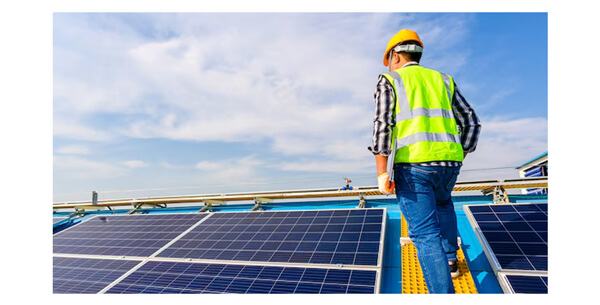Contents:
Solar panels have become increasingly popular in recent years as a renewable and eco-friendly energy source. These photovoltaic devices convert sunlight into electricity, providing a clean and sustainable alternative to traditional fossil fuels. However, while solar energy has gained significant traction in many parts of the world, there are still regions where the adoption of solar panels remains limited or challenging. In this article, we will explore the factors that restrict solar panel installations and the areas where solar energy is not readily available.

The Benefits of Solar Energy
Solar energy offers a range of benefits that have made it an attractive choice for both individuals and communities. Some of the key advantages of solar power include:
-
Renewable and Sustainable: Solar energy is a renewable resource that can be harnessed indefinitely, reducing our reliance on finite fossil fuels.
-
Environmentally Friendly: Solar power generation does not produce any greenhouse gas emissions or other pollutants, making it a clean and sustainable energy option.
-
Cost-Effective: The cost of solar technology has significantly decreased in recent years, making it a more affordable energy solution for many households and businesses.
-
Increased Energy Independence: Solar panels allow you to generate your own electricity, reducing your dependence on the traditional power grid and providing greater energy independence.
Factors that Restrict Solar Panel Installations
While the benefits of solar energy are clear, there are several factors that can restrict or limit the installation of solar panels. These factors include:
-
Geographic Location: The availability and efficiency of solar panels are heavily influenced by the geographic location, with some regions receiving more consistent and intense sunlight than others.
-
Climate and Weather Conditions: Factors such as cloud cover, rainfall, and temperature can affect the performance and viability of solar panels.
-
Infrastructure and Grid Connectivity: In some areas, the existing infrastructure and grid connectivity may not be able to support the integration of solar power effectively.
-
Economic Factors: The initial cost of installing solar panels can be a barrier, especially in regions with limited financial resources or access to solar incentives and subsidies.
-
Regulatory Barriers: In certain regions, the regulatory environment may not be conducive to the widespread adoption of solar energy, with restrictive policies or a lack of supportive legislation.
Geographic Limitations of Solar Panel Usage
One of the primary factors that restrict solar panel installations is the geographic location. Solar energy is most effectively harnessed in regions that receive consistent and intense sunlight throughout the year. This includes areas near the equator, such as parts of Africa, South America, and Southeast Asia, as well as certain desert regions.
However, there are many parts of the world that do not receive adequate sunlight or have significant seasonal variations in solar irradiance. These regions may include:
-
High-Latitude Regions: Areas located at high latitudes, such as the Arctic and Antarctic regions, often have limited sunlight, especially during the winter months, making solar energy less viable.
-
Cloudy and Rainy Regions: Regions with frequent cloud cover, heavy rainfall, or other adverse weather conditions can experience reduced solar energy production.
-
Mountainous and Forested Areas: Mountainous terrain and dense forests can create shading and obstruct direct sunlight, reducing the effectiveness of solar panels.
Countries with Limited Solar Panel Penetration
While solar energy has seen a rapid global expansion in recent years, there are still many countries where the adoption of solar panels remains limited. Some of these countries include:
-
Sub-Saharan African Countries: Many countries in sub-Saharan Africa, such as Chad, Central African Republic, and Niger, have low electrification rates and limited access to solar energy.
-
Central Asian Countries: Countries in Central Asia, such as Tajikistan, Kyrgyzstan, and Turkmenistan, have relatively low levels of solar energy adoption.
-
Small Island Developing States: Many small island nations, such as those in the Caribbean and Pacific regions, face challenges in transitioning to solar energy due to factors like limited land area and grid infrastructure.
Challenges Faced in Remote Areas without Solar Panels
In addition to the geographic limitations, there are several challenges that remote areas without access to solar panels face. These challenges include:
-
Lack of Electricity Access: Many remote and rural communities around the world still lack access to reliable and consistent electricity, limiting their ability to power homes, businesses, and essential services.
-
Dependence on Fossil Fuels: In the absence of solar energy, these remote areas often rely on more traditional and polluting energy sources, such as diesel generators or kerosene lamps, which can be costly and environmentally damaging.
-
Limited Infrastructure and Resources: Remote areas may have limited access to the necessary infrastructure, materials, and technical expertise required for the installation and maintenance of solar panels.
-
Economic Barriers: The high upfront costs of solar systems can be a significant barrier for low-income communities, making it difficult for them to invest in renewable energy solutions.
Alternative Energy Sources in Areas without Solar Panels
In regions where solar energy is not readily available, communities and governments have explored alternative energy sources to meet their energy needs. Some of these alternative energy solutions include:
-
Wind Power: In areas with consistent wind patterns, wind turbines can be a viable option for generating electricity.
-
Hydropower: Regions with access to flowing water, such as rivers or streams, can harness the power of hydroelectricity.
-
Geothermal Energy: Areas with significant geothermal resources, such as volcanic regions, can tap into the earth's natural heat to generate electricity.
-
Biofuels: The use of biomass, such as agricultural waste or energy crops, can provide an alternative energy source in some regions.
-
Hybrid Systems: Combining multiple renewable energy sources, such as solar and wind, can help create a more reliable and resilient energy system in areas with limited access to a single energy source.
Initiatives to Promote Solar Energy in Regions with Limitations
Despite the challenges faced in regions with limited solar panel availability, there are various initiatives and efforts underway to promote the adoption of solar energy in these areas. Some of these initiatives include:
-
Government Incentives and Subsidies: Many governments have implemented policies and financial incentives, such as tax credits, feed-in tariffs, and net metering, to encourage the installation of solar panels and make the technology more accessible.
-
International Development Programs: Organizations like the World Bank, the United Nations, and various non-governmental organizations (NGOs) have launched initiatives to support the deployment of solar energy in developing countries and remote communities.
-
Off-Grid Solar Solutions: The development of innovative off-grid solar technologies, such as solar home systems and micro-grids, has enabled the provision of clean and reliable energy in areas without access to the traditional power grid.
-
Capacity Building and Training: Efforts to provide technical training, education, and capacity-building programs have helped to develop the local expertise and skills necessary for the installation and maintenance of solar systems in remote areas.
-
Partnerships and Collaborations: Collaborations between governments, private companies, and local communities have helped to overcome the challenges and barriers to solar energy adoption in regions with limited access.
Conclusion
While solar energy has become a widely adopted and accessible energy solution in many parts of the world, there are still regions where the installation and use of solar panels remain limited or challenging. Factors such as geographic location, climate, infrastructure, and economic barriers can all contribute to the restricted availability of solar energy in certain areas.
However, as the global push for renewable energy continues to gain momentum, innovative solutions and initiatives are emerging to address these limitations. From government incentives and international development programs to the advancement of off-grid solar technologies, there is a growing effort to bring the benefits of solar energy to communities that have traditionally been underserved.
By understanding the unique challenges faced in regions without solar panels and exploring alternative energy sources, we can work towards a more inclusive and sustainable energy future that empowers all communities, regardless of their geographic location or economic status.
If you're interested in learning more about the latest developments in solar energy and how it can be made more accessible, be sure to subscribe to our newsletter. We'll keep you informed on the latest industry trends, new technologies, and practical tips for incorporating solar power into your home or business.
FAQs






